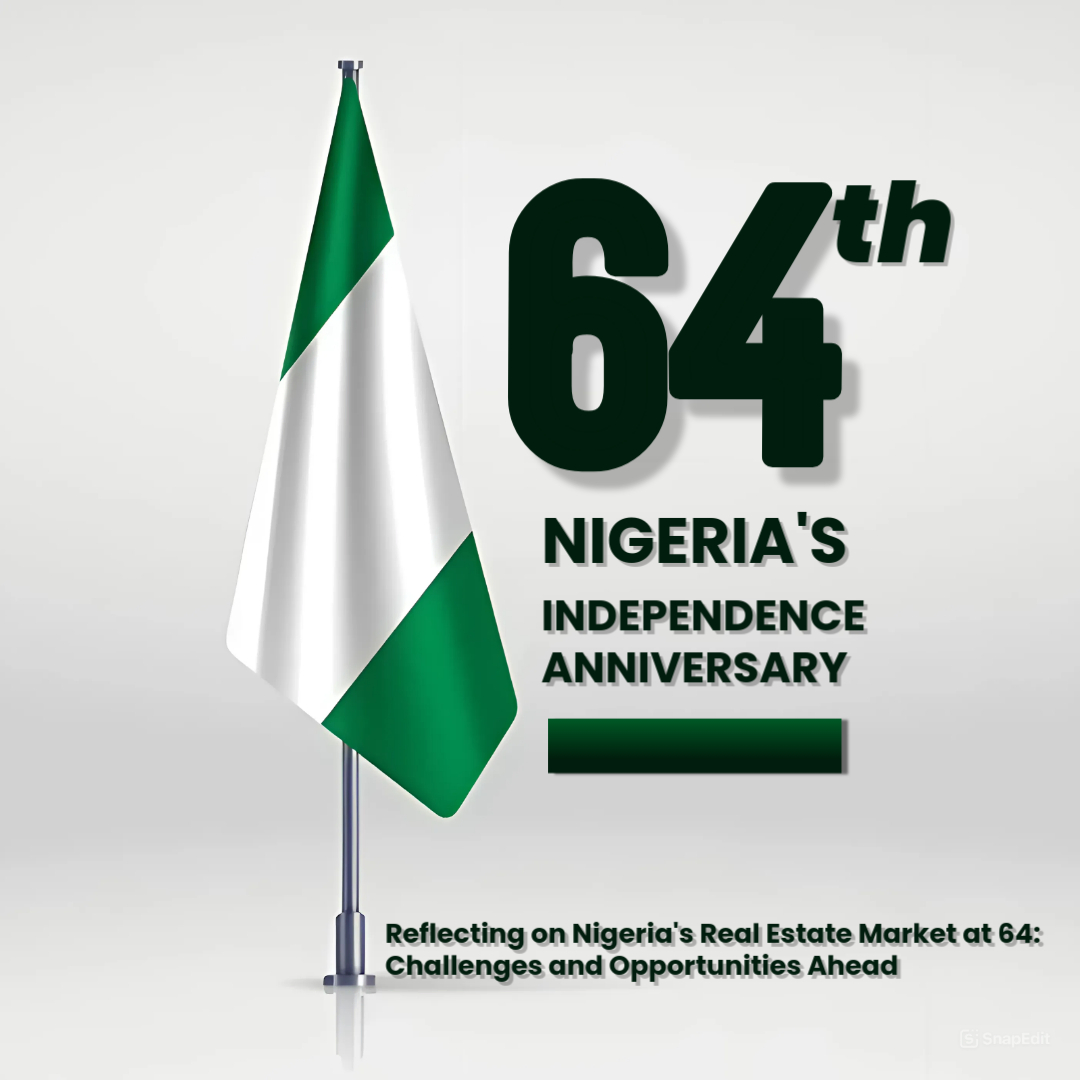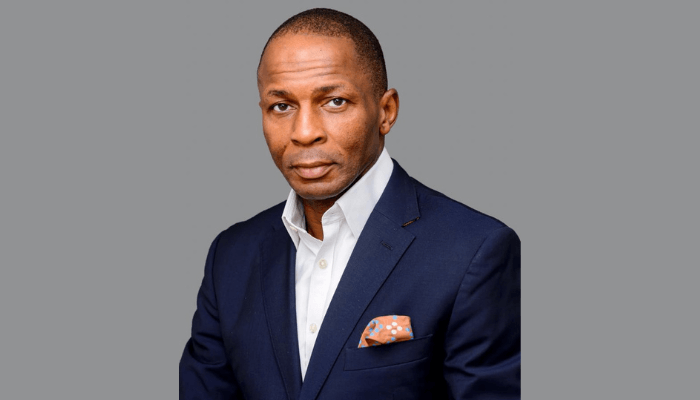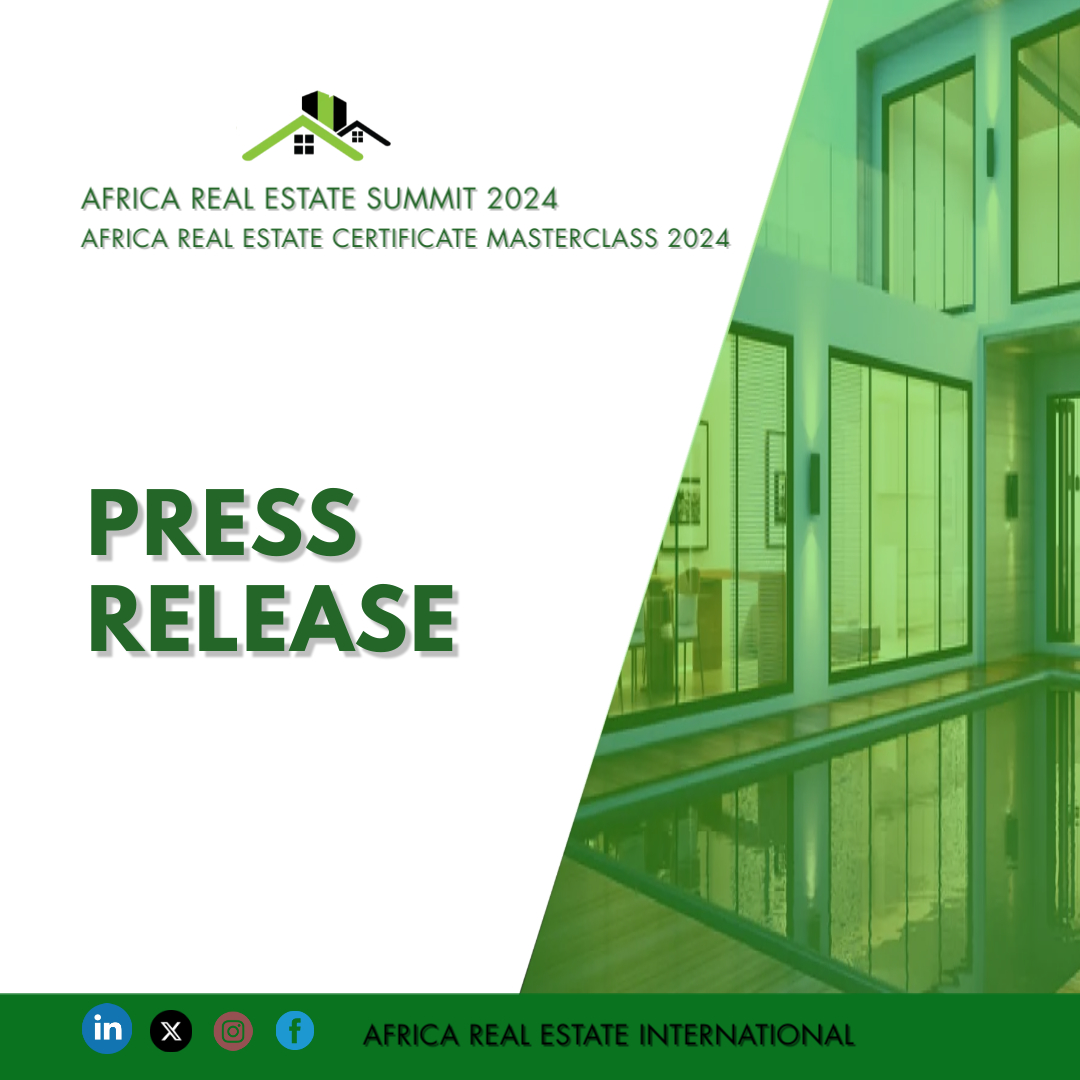Zambia gained independence from British colonial rule on October 24, 1964. The country’s first president was Kenneth Kaunda, who led the nation in the post-colonial period and held power for 27 years. Zambia has a rich history influenced by various ethnic groups, colonialism, and the struggle for independence. Zambia is a landlocked country in southern Africa. It is bordered by eight countries: Tanzania to the northeast, Malawi to the east, Mozambique to the southeast, Zimbabwe to the south, Botswana and Namibia to the southwest, Angola to the west, and the Democratic Republic of the Congo to the north. Zambia is known for its diverse wildlife, rich natural resources, and significant cultural heritage. General Information Official Name: Republic of Zambia Capital: Lusaka Official Language: English Currency: Zambian kwacha (ZMW) Population: 19,693,423 (2022 Population) Area: 752,612 square kilometers (290,586 square miles) Economy GDP Growth Rate: 5.2% Annual Inflation Rate: 15.4% Employment Rate: 31.5% Major Industries: Mining (particularly copper and cobalt), agriculture, tourism, and manufacturing. Key Exports: Copper, cobalt, tobacco, flowers, and gemstones. Zambia’s Real Estate Challenges 1. Economic Instability: Zambia has faced various economic challenges, including fluctuating commodity prices, inflation, and high public debt. Such economic instability can deter investment in real estate and affect property values. 2. Infrastructure Deficiencies: While urban areas are growing, many rural regions still lack necessary infrastructure. Poor roads, inadequate public transport, and inconsistent utilities can make it challenging to develop real estate projects. 3. Access to Financing: Many potential homeowners and investors face difficulties accessing affordable financing options. High interest rates and stringent lending criteria can limit investment in both residential and commercial properties. 4. Regulatory and Bureaucratic Hurdles: The real estate industry often grapples with bureaucratic inefficiencies, lengthy permit processes, and inconsistent enforcement of regulations, which can slow down development projects and deter foreign investment. 5. Land Tenure Issues: Land ownership in Zambia can be complex, with a dual system of customary and statutory land tenure. This can lead to disputes and uncertainty, making real estate investments riskier. 6. Urbanization Pressure: Rapid urbanization has led to an influx of people into cities, creating pressure on the housing supply. This can result in informal settlements and increased demand for affordable housing. Zambia’s Real Estate Opportunities Residential Real Estate Affordable Housing: With a growing urban population, there is a high demand for affordable housing, particularly in urban centers like Lusaka and Ndola. Investing in the development of low- to mid-cost housing can cater to the large segment of the population seeking such options. Luxury Housing Market: As the middle class expands, there is also demand for luxury apartments and gated communities, particularly among expatriates and affluent Zambians. 2. Commercial Real Estate Office Spaces: As businesses expand, there is a need for modern office spaces. Investing in office buildings or co-working spaces can be lucrative, particularly in urban areas. Retail Developments: Shopping malls and retail centers are increasingly in demand, driven by growing consumer spending. There are opportunities in both large malls and smaller retail formats. 3. Industrial Real Estate Warehousing and Logistics: The growth of e-commerce and trade in Zambia has created a demand for warehouses and distribution centers. Investing in logistics parks can be beneficial, given Zambia’s strategic location in the Southern African region. 4. Tourism and Hospitality Hotels and Lodges: Zambia is known for its natural beauty and national parks. Investing in tourism infrastructure, like hotels, lodges, and eco-tourism resorts, can yield good returns, especially in areas near key attractions like Victoria Falls and South Luangwa National Park. Vacation Rentals: The rise in international travel and local tourism creates opportunities for vacation rentals, particularly in tourist-heavy areas. 5. Mixed-Use Developments Combining residential, commercial, and recreational facilities in one development can attract diverse tenants and buyers, making it an attractive investment strategy. Agricultural land and development into residential or commercial spaces: Zambia has significant agricultural potential, and land investment can also lead to future development opportunities as urban areas expand. 6. Government Initiatives The Zambian government has various initiatives aimed at promoting housing development, particularly through partnerships with private investors, as well as special economic zones that can provide favorable investment conditions. Conclusion Zambia’s real estate market at 60 presents a mix of challenges and opportunities. The nation stands at a crossroads, with the potential for growth driven by a changing demographic, government support, and a focus on sustainable development. Strategic planning, investment, and cooperation among stakeholders will be essential to overcoming the challenges and harnessing the opportunities ahead, ultimately contributing to the country’s economic development and improving the quality of life for its citizens.
Reflecting on Uganda’s Real Estate Market at 62: Challenges and Opportunities Ahead
Uganda has a rich cultural history, with over 50 ethnic groups. It gained independence from British colonial rule on October 9, 1962. The post-independence period saw various political challenges, including the dictatorship of Idi Amin in the 1970s. Uganda is a landlocked country located in East Africa, bordered by Kenya to the east, South Sudan to the north, the Democratic Republic of the Congo to the west, Rwanda to the southwest, and Tanzania to the south. The country has a diverse landscape that includes the shores of Lake Victoria, mountainous regions such as the Rwenzori Mountains, and numerous national parks. It is also known for its wildlife, including mountain gorillas, elephants, and numerous bird species. Uganda’s economy is predominantly agricultural, with coffee, tea, and cotton being some of the key exports. In recent years, there has been an emphasis on developing the oil and gas industry. Uganda is often referred to as the “Pearl of Africa” due to its natural beauty and biodiversity. Key attractions include Bwindi Impenetrable National Park, known for its mountain gorillas, Murchison Falls National Park, and various cultural sites. Key Facts about Uganda Capital: Kampala Official Languages: English and Swahili Currency: Ugandan Shilling (UGX) Population: 45.9 Million Persons published by the National Population and Household Census (NPHC) 2024 Uganda’s Real Estate Market: Challenges and Opportunities 62 years post-independence presents a unique blend of challenges and opportunities. Reflecting on the current landscape, we can identify several key factors influencing the market. Current Landscape 1. Growing Urbanization: Uganda is experiencing rapid urbanization, with substantial growth in cities like Kampala. This drives demand for residential, commercial, and mixed-use developments, presenting opportunities for investors and developers. 2. Infrastructure Development: The government has invested in infrastructure projects, such as roads, rail, and energy, which enhance accessibility and improve the investment climate. Ongoing initiatives like the Kampala-Jinja Expressway and developments in the oil and gas sector are expected to boost real estate demand. 3. Population Growth: A young and growing population fuels housing demand. However, this also leads to pressure on existing housing stock, necessitating the production of affordable housing solutions. Challenges 1. Access to Financing: The cost of borrowing in Uganda remains high, limiting access to financing for many potential homeowners and real estate developers. Most banks charge high interest rates, making it difficult for individuals and developers to embark on new projects. 2. Regulatory Environment: The real estate sector is often hampered by bureaucratic hurdles and a lack of transparency in regulatory processes. Delays in obtaining permits and inconsistent enforcement of regulations can deter investment. 3. Land Issues: Land ownership disputes, unclear land tenure systems, and the prevalence of informal settlements present significant challenges. The lack of a coherent land policy can lead to conflicts and uncertainty, discouraging investment. 4. Economic Fluctuations: The economy is sensitive to external factors, such as global commodity prices and trade dynamics. Economic instability can affect purchasing power and real estate investments, leading to uncertainty in the market. Opportunities 1. Financing Options: Bank Loans: Traditional banking institutions offer mortgage products, but the uptake can be limited due to high interest rates and strict lending criteria. Microfinance: This sector has grown, especially for lower-income segments, providing access to finance for smaller real estate developments. Investment Funds: Real estate investment trusts (REITs) and private equity funds are emerging as new sources of capital for larger developments. 2. Affordable Housing: There is a significant shortage of affordable housing in urban areas. Developers who can innovate and provide cost-effective housing solutions can tap into a lucrative market segment. 3. Sustainable Development: As global awareness of climate issues rises, there is an opportunity to adopt sustainable building practices. Eco-friendly developments can attract a new demographic of environmentally-conscious investors and buyers. 4. Investing in Technology: Adopting technology in real estate processes, such as property management, sales, and client engagement, can streamline operations and enhance customer experiences. 5. Diversified Property Types: There is a growing demand for various property types, including logistics hubs, retail spaces, and mixed-use developments due to changing consumer behaviors and shopping patterns. 5. Government Initiatives: The Ugandan government has been involved in initiatives to improve infrastructure, which in turn can stimulate real estate development. The National Development Plan often outlines priorities in housing, urban development, and investment incentives. 7. Investment Potential: International investors have shown interest in Uganda’s real estate due to its favorable demographics and growth potential. Areas such as Kampala, Entebbe, and emerging towns show promise for both residential and commercial investments. Conclusion As Uganda’s real estate market reflects on its 62 years of development, it stands at a crossroads rich with potential. While challenges like access to financing, regulatory constraints, and land issues must be addressed, the opportunities—especially in affordable housing, sustainability, and technological innovation—present avenues for growth. Stakeholders in Uganda’s real estate market must work collaboratively with the government, financial institutions, and communities to navigate these challenges and leverage opportunities for a sustainable and prosperous future.
Reflecting on Nigeria’s Real Estate Market at 64: Challenges and Opportunities Ahead
Nigeria is celebrating 64 years of independence from British colonial rule on October 1, 1960. As the country marks this milestone, it’s essential to examine the state of its real estate market, which has been a significant contributor to its economy. Overview of the Nigerian Real Estate Market The Nigerian real estate market is characterized by a mix of formal and informal sectors, with a significant presence of private developers, builders, and property owners. The market is driven by demand for residential, commercial, and industrial properties, as well as infrastructure development. Key Statistics: 1. Gross Domestic Product (GDP): The real estate sector contributes about 8.5% to Nigeria’s GDP, making it a significant contributor to the nation’s economy. 2. Population Growth: Nigeria’s population is projected to reach 440 million by 2050, making it one of the most populous countries in the world. This rapid growth is driving demand for housing and other real estate services. 3. Urbanization: Over 50% of Nigeria’s population lives in urban areas, which is driving demand for commercial and residential properties. 4. Property Prices: Property prices vary depending on location, size, and type of property. 5. Vacancy Rate: The vacancy rate in the Nigerian real estate market is around 10%, indicating a relatively low level of unsold properties. 6. Investment: The real estate sector is a popular investment option in Nigeria, with many investors opting for rental properties and residential developments. 7. Government Support: The Nigerian government has implemented several initiatives to support the real estate sector, including the creation of the Nigerian Capital Development Fund (NCDF), Real Estate Investment Trusts (REITs. Trends: 1. Rise of Affordable Housing: There is growing demand for affordable housing in Nigeria, driven by rising income inequality and a shortage of affordable housing options. 2. Increased Focus on Sustainability: There is increasing awareness of the importance of sustainable building practices in Nigeria, with many developers incorporating green building features into their projects. 3. Growing Demand for Office Space: The demand for office space in Nigeria is increasing, driven by the growth of the IT and financial sectors. 4. Emphasis on Urban Renewal: There is a growing emphasis on urban renewal in Nigeria, with many cities undertaking regeneration projects to improve infrastructure and amenities. 5. Innovation in Real Estate Technology: The Nigerian real estate market is seeing an increase in the adoption of technology, including blockchain in real estate and virtual tours. Challenges: 1. Infrastructure Deficit: Nigeria’s infrastructure deficit is a significant challenge for the real estate sector, with many areas lacking access to basic amenities such as water, electricity, and sanitation. 2. Lack of Financing: Access to financing is a major challenge for many developers and homeowners in Nigeria, with many relying on informal financing options or personal savings. 3. Corruption: Corruption remains a significant challenge in Nigeria, with many developers and investors facing bureaucratic hurdles and corruption-related issues. 4. Security Concerns: Security concerns are a major issue in some parts of Nigeria, particularly in areas with high levels of crime and violence. 5. Regulatory Challenges: The Nigerian real estate market is subject to complex regulatory requirements, which can be challenging for developers and investors to navigate. 6. Lack of Regulation: The lack of effective regulation in the real estate sector can lead to fraudulent activities, disputes, and uncertainty among investors. Recommendations 1. Improve Regulation: The government should implement effective regulations to ensure transparency and accountability in the real estate sector. 2. Invest in Infrastructure: Investing in infrastructure development will improve connectivity and accessibility, making it easier to develop properties. 3. Foster Foreign Investment: Encouraging foreign investment can bring in much-needed capital and expertise to develop the real estate sector. 4. Promote Affordable Housing: Implementing policies and initiatives to promote affordable housing will help address the shortage of decent housing options. Conclusion As Nigeria celebrates 64 years of independence, it’s essential to focus on developing its real estate market to drive economic growth and improve living standards. Addressing the challenges faced by the sector will require a collaborative effort between government agencies, private developers, and stakeholders. By promoting regulation, infrastructure development, foreign investment, and affordable housing initiatives, Nigeria can unlock the potential of its real estate market and achieve sustainable growth.
Value of environmental, social and governance for FM – Tunde Obileye
For facility teams that no longer want to be seen as glorified maintenance engineers, or responders to emergencies and want to take their facilities programmes to the next level, environmental, social and governance (ESG) provide that opportunity. Many companies and organizations continue to realize that it is no longer acceptable to operate solely off the idea that the bottom line is all that matters. Instead, they are contributing beneficial investments in ESG programmes. ESG initiatives include implementing energy savings projects, selecting products that are produced in a sustainable way, or choosing vendors that share the same mindset. Facility teams that embark on such projects can easily showcase to leadership that they have the skills, talents, capabilities, and drive that goal beyond putting out ‘fires’ in reaction to everyday facilities issues. With ESG opportunities, every facility team can make a big impact on leadership and have a seat at the C-suite table. The idea of ESG is nothing new and can also be termed ‘Corporate Social Responsibility’ (CSR) and sustainability. By integrating ESG principles into the operations, facility managers can proactively identify risks, adopt sustainable practices, and maintain compliance in different areas that will reduce the likelihood of negative consequences and prevent unnecessary emergency activities. With these good ESG practices, teams can develop a strategy that focuses on value through reduced costs, boosted productivity, solid asset management, and sustainable investing. ESG practices can include energy efficiency optimization, improving indoor air quality, providing comfortable and ergonomically sound workspaces, implementing renewable energy solutions, minimizing waste generations and incorporating wellness initiatives. These goals can influence the design, construction, and operations of facilities which can lead to long-term environmental and health and wellness benefits for all end users. The significance of ESG is that facility managers are creating opportunities to engage with stakeholders such as employees, customers, suppliers, and the local communities, to address their concerns and foster positive relationships. These relationships have a serious impact on brand reputation for both the facilities team and organization. Before facility managers start working on their departments’ contribution to the ESG strategy, it’s a great idea to create a team of qualified individuals to identify and evaluate opportunities where the department can shine. Having longevity in mind and being intentional about the efforts put into the process is key. The goal is to have all efforts contribute to the same ambition, including using the facilities team to add value to the organization. Considering ESG in facilities management may seem like an added expense and burden, it makes sense to bear in mind these four key points: communication, advocacy, intentionality, and productivity. Communicating the ESG strategy to stakeholders while demonstrating alignment to current and future business objectives grabs attention. Correlating the ESG work with the organization’s specific goals and metrics shows FM is working towards the same goal. To achieve this, collaborating with whoever to get the correct message across and utilizing the organization’s resources are necessary. With ESG, organizations that make efforts to improve labour conditions, promote diversity, remain environmentally compliant, and give back to the community remain sustainable. In the long term, every organization can benefit from ESG by recording reduced operating costs, improved brand reputation, and access to new markets and investment opportunities. As the organization wins, facility managers win and when they win, facilities teams across the country can continue to create opportunities to showcase their worth.
Process Improvement Within The Facility Mamagement Framework -Tunde Obileye LL.B(Hons) CIWFM
Processes are an integral part of facility management (FM). To that extent, processes and activities are the actions that provide perceptible or tangible benefits to owners, occupants, tenants, guests and those who work in the facility. These processes are expected to be value-add mechanisms to the entire maintenance and management systems. However, in order to continue to achieve the expected or desired result, process improvement is usually required either as the need arises or on a periodic basis. Process improvement may be for the purpose of refining processes and activities that currently add value. This includes simplifying procurement paperwork, simplifying equipment inventory procedure, publishing a new version of the maintenance manual and redesigning inadequate performance standards. On the other hand, it may also be to eliminate wasted resources and effort since the goal of facility management can be defined as managing a facility where people delight in interacting with the built-environment and its contents in an optimally cost-effective manner. Any task, method or operation that does not support this goal can be described as ‘waste’ if they add nothing of value to the facility and its environment. When such wasteful activities are eliminated, money is saved and facility management becomes valued for efficiency and effectiveness. Such waste-elimination activities include scrapping and recreating an outdated safety plan, and rectifying dangerous equipment shutdown procedures. For process improvement to take place, it is advisable to set up a Process Improvement Team (PIT) to identify and investigate problems, find root causes and analyse them, and make improvement to the processes under review. The goal of the team is to effect positive change to the systems that support the work of the facility manager and maintenance team. Ideally, the team should consist of personnel who either have knowledge of the processes in question or whose daily responsibilities are directly or indirectly affected by the issue(s) being examined. They may be selected from different departments or divisions within the organisation. The extent to which process improvement is deemed successful or acceptable will depend on how much results are measured. This is necessary as there may be those who believe that the current processes are working and don’t require to be changed. Others may not think the improvement has made any difference. Whatever the case, the goal of capturing metrics is to demonstrate the positive impact of the process improvement to the overall objective of facility management.Once their recommendations have been made and implemented, the assignment is generally complete and the team may be disbanded.
The Role of FM in Understanding Cybersecurity and Data Protection -Tunde Obileye LL.B(Hons)
In today’s ever-changing world, where technology plays a pivotal role in managing and maintaining facilities, the importance of cyber security and data protection cannot be overstated. Facilities management and building technology continue to evolve significantly with building automation systems becoming integral components of modern facilities and the built environment. These systems offer numerous benefits, from energy efficiency to improved comfort and operational control. However, this increased connectivity also exposes the vulnerabilities of the built environment to threats that could disrupt operations, compromise sensitive data, and potentially endanger the safety of end users. As buildings and other allied facilities become increasingly reliant on technology and interconnected systems, the importance of cyber security and data protection training for facility management and building personnel is crucial. The potential consequences of a cyber attack on a building are severe, ranging from compromised building access information to service disruptions, physical damage, and safety risks. Therefore, facilities managers need to understand the vulnerabilities of these systems and take an active role in protecting them. ISO 27001 is the tool for best practice approach to create an effective management system for information security, cyber security and privacy protection by addressing people, processes and technology. Whether leading or supporting these efforts, facility management professionals are integral to ensuring the safety of people and organizational assets It is crucial to have a strong cyber security and data protection strategy ready so that facilities managers can put it into action when the need arises. Starting with employee education and awareness, facility managers must also be aware of the assets that need to be protected against possible threats or attacks. They must be aware of and build policies and procedures for guarding the assets. Creating, evaluating, and maintaining a robust process is essential, which involves including rules for password protection, handling sensitive data, and using portable devices. These simple but powerful steps have benefitted facilities managers in the past and continue to do so, in the pursuit of developing a solid cybersecurity and data protection mechanism. A detailed risk analysis is highly recommended and may prove to be very beneficial. The steps highlighted below are useful for carrying out risk analysis:• Establish a baseline for network traffic to identify existing gaps and potential security vulnerabilities related to the Operational Technology (OT) and Information Technology (IT) environment.• Examine the asset inventory to identify asset connectivity with networks, and identifying existing gaps and potential security vulnerabilities. Facilities managers are getting more aware of the danger in their OT environment and understand the importance of strengthening their cyber security framework. The awareness comes from the need to reduce to the barest minimum the cyber security risk as OT and IT systems continue to converge. Cyber security and data protection in the digital age has become more paramount than ever, and the built environment is no exception to this. In concluding, facilities managers, along with experts from both IT and OT, are collaborating in developing and managing effective cyber security policies and procedures to improve the overall facility cybersecurity framework as more internet-connected devices become part of daily facility operations. Stakeholders are aware that unprotected systems become alluring targets as systems get more complicated and have more complex associated risks. Facilities managers are thus embracing evolving technology to become cyber security-ready to handle evolving digital security risks.
MAINTAINING THE DRIVE FOR A SUSTAINABLE FUTURE IN FACILITY MANAGEMENT -Tunde Obileye LL.B(Hons) CIWFM
Sustainability is one of the most frequently heard buzzwords when our future development is brought to the fore, regardless of whether it is about the future of our society, businesses, nature or the planet itself. Even though the word “sustainability” has become somewhat trendy and its usage has increased in recent years, its concept is not new. The concept of sustainability first appeared in the 1987 Brundtland report produced for the UN. Understanding what it really means, understanding our relationship with nature and why we need to become more sustainable is one of the most crucial situations facing the world today. It should come as no surprise that this topic concerns everyone including the biggest global corporations.Sustainability is a complex concept that has attracted different definitions however one point is clear, it is not a trend but a concept that is bringing profound change in the social, economic and environmental aspects of our daily lives. With the changing outlook towards sustainability, business leaders continue to face the real challenge of securing the bottom line of their organizations, ensuring the welfare of their employees, and the planet such as adoption of greener technologies, conserving energy and reducing pollution which leads to better living environment and public health. While many companies talk the talk of sustainability, claiming to be integrating environmental and societal concerns into their business models, a far fewer number of them actually walk the walk. Sustainability is typically treated by most managers as someone else’s problem and relegated to a department or even a single individual. Therefore, facilities managers or FM practitioners ought to play their part in how best to successfully support their organizations in transforming the corporate business models as a catalyst for a new way of understanding the long-term sustainable vision and seeking a balance between the social, economic and environmental targets. As key players in the workplace and facilities management space, facilities managers should introduce sustainable practices in the day-to-day maintenance activities as well as putting together a strategic plan. This will include conscious actions such as cutting down excess energy usage and switching to sustainable sources such as wind, hydropower and solar. Another focus area for the strategic plan will be waste management. Generally, the way we dispose of waste is troubling. The goal of sustainable waste management is to reduce the number of natural resources consumed, reuse the materials taken from nature as much as possible and create as minimal waste as possible. For sustainability progress to be maintained, the following recommendations are provided for facilities managers to consider as part of the organizational model and culture. Establish purpose-based values on sustainability.Include sustainability as part of corporate strategy.Train employees and incentivize actions that advance sustainability.Create a sustainability culture in your organization.Conduct business with sustainability in mind. Small actions make a big difference, if facilities managers encourage all employees do what they can in their own spheres of influence, impact will take place.
MAINTAINING THE DRIVE FOR A SUSTAINABLE FUTURE IN FACILITY MANAGEMENT -Tunde Obileye LL.B(Hons) CIWFM
Sustainability is one of the most frequently heard buzzwords when our future development is brought to the fore, regardless of whether it is about the future of our society, businesses, nature or the planet itself. Even though the word “sustainability” has become somewhat trendy and its usage has increased in recent years, its concept is not new. The concept of sustainability first appeared in the 1987 Brundtland report produced for the UN. Understanding what it really means, understanding our relationship with nature and why we need to become more sustainable is one of the most crucial situations facing the world today. It should come as no surprise that this topic concerns everyone including the biggest global corporations.Sustainability is a complex concept that has attracted different definitions however one point is clear, it is not a trend but a concept that is bringing profound change in the social, economic and environmental aspects of our daily lives. With the changing outlook towards sustainability, business leaders continue to face the real challenge of securing the bottom line of their organizations, ensuring the welfare of their employees, and the planet such as adoption of greener technologies, conserving energy and reducing pollution which leads to better living environment and public health. While many companies talk the talk of sustainability, claiming to be integrating environmental and societal concerns into their business models, a far fewer number of them actually walk the walk. Sustainability is typically treated by most managers as someone else’s problem and relegated to a department or even a single individual. Therefore, facilities managers or FM practitioners ought to play their part in how best to successfully support their organizations in transforming the corporate business models as a catalyst for a new way of understanding the long-term sustainable vision and seeking a balance between the social, economic and environmental targets. As key players in the workplace and facilities management space, facilities managers should introduce sustainable practices in the day-to-day maintenance activities as well as putting together a strategic plan. This will include conscious actions such as cutting down excess energy usage and switching to sustainable sources such as wind, hydropower and solar. Another focus area for the strategic plan will be waste management. Generally, the way we dispose of waste is troubling. The goal of sustainable waste management is to reduce the number of natural resources consumed, reuse the materials taken from nature as much as possible and create as minimal waste as possible. For sustainability progress to be maintained, the following recommendations are provided for facilities managers to consider as part of the organizational model and culture.Establish purpose-based values on sustainability.Include sustainability as part of corporate strategy.Train employees and incentivize actions that advance sustainability.Create a sustainability culture in your organization.Conduct business with sustainability in mind. Small actions make a big difference, if facilities managers encourage all employees do what they can in their own spheres of influence, impact will take place.
Kenya, Nairobi to host Africa Real Estate Summit and Africa Real Estate Certificate Masterclass in 2024
Enhancing Sustainable Real Estate Development in Africa announced as 2024 Theme We are excited to announce that two of our products: The annual Pan Africa Real Estate Summit and Africa Real Estate Certificate Masterclass will be held June 2024 in Nairobi, Kenya – East Africa after 3 successful summit and masterclass in West African cities -Abuja, Accra, and Lagos. These events are expected to bring together experts and stakeholders from the real estate industry in the continent to share experiences, showcase innovations, and discuss investment opportunities. The both events scheduled for June 2024, will incorporate a wide range of activities including keynote addresses, masterclass, interactive panel discussions, exhibitions, award recognition, and networking sessions. It will also provide a platform for investors, developers, policymakers, architects, and other key players in the real estate landscape to learn and engage in meaningful dialogue about the industry’s future. “We are excited to host two of our programs: The Africa Real Estate Summit and Africa Real Estate Certificate Masterclass in Nairobi in 2024”, said Mr. Onwuka Onyeka, the Founder of A.R.E. International Ltd. “These events are an important milestone as we continue to grow the real estate sector in Africa. We anticipate the ARESummit and Masterclass will positively impact the industry, creating valuable partnerships, and new investment opportunities.” The events will cover key themes such as sustainability, affordability, technology, and innovation in real estate. Participants will engage with experts in different sectors of the industry through in-depth discussions, interactive workshops, and keynote presentations. During the events, attendees will also have the opportunity to explore Nairobi, a vibrant hub of innovation and growth. They will experience first-hand the city’s rich culture and heritage, which continues to attract investors and tourists from across the world. “We know that the success of this event will come from the participation of key stakeholders in the industry”, said Mr. Onwuka. “We invite stakeholders from all parts of the industry to join us in Nairobi in 2024 to engage in relevant conversations, share experiences, and collaborate to unlock the potential of the real estate sector in Africa.” Participants can pre-register here ARESummit2024.eventbrite.com for more information. For partnership and travel packages available to international participants, please visit www.africarealestatesummit.org. For Kenyan nationals, kindly contact our country representative, Christopher Alvin Mokaya on +254 711 123 456 or send a mail at info@africarealestatesummit.org Follow event updates on socials: Like Africa Real Estate Certificate Masterclass on Facebook Follow Africa Real Estate Masterclass on Instagram Like Africa Real Estate Summit on Facebook Follow Africa Real Estate Summit on Instagram Follow Africa Real Estate on LinkedIn
PRESS RELEASE
Africa Real Estate International Ltd Brings Innovative Real Estate Solutions to African Market with New Agency Launch” Africa Real Estate International Ltd, a cutting-edge real estate company, officially launches her Agency today. Africa Real Estate International Agency (AREIA) is a real estate agency that aims to provide top-notch real estate services to clients in Africa. AREIA will operate in multiple African countries, including Nigeria, Ghana, Kenya, and South Africa. Our business model will focus on providing a comprehensive range of real estate services, including property sales, leasing, property management, and investment advisory services. AREIA has built a team of highly experienced and professional real estate agents who possess an in-depth knowledge of the African real estate market and who have extensive experience dealing with the unique challenges of this market. Speaking about the launch, the CEO of Africa Real Estate International Ltd, Onwuka M. Onyeka, said, “We are thrilled to be launching Africa Real Estate International Agency today. Our vision is to be the go-to real estate agency for clients looking to invest in or sell property in Africa. We are passionate about providing world-class service to our clients and are confident that we have the team and technology in place to make this a reality.” AREIA will leverage networks, technology, and digital marketing strategies to reach a wider audience and streamline our operations. For more information, visit us at www.africarealestateinternational.comEmail: agency@africarealestateinternational.com Call/WhatsApp Customer Support +234 915 099 9340 Follow us on socials: Twitter @AREInternationFacebook: Africa Real Estate InternationalIG: Africa Real Estate InternationalYoutube.com/@africarealestateinternationalhttps://www.linkedin.com/Africaealestateinternational






